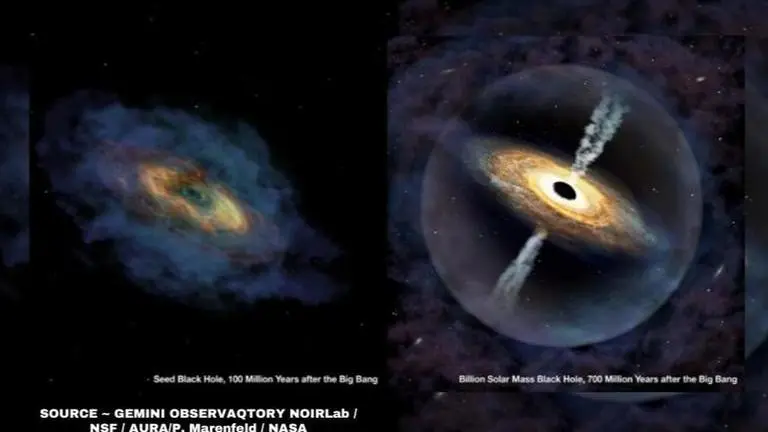Updated 26 June 2020 at 16:46 IST
Astronomers discover 'Monster' Quasar with humongous Black Hole equivalent to 10,000 suns
Astronomers from Hawaii have discovered the existence of an ancient Quasar with a humongous black hole. The size of its black hole is 10,000 suns.
- Science News
- 4 min read

Not so long ago, we found out that scientists are on the quest to unveil the history of Dark Age and its existence. Now, reports have revealed that a massive Quasar which is present since the early universe, containing a monster black hole with a mass equivalent to 1.5 billion suns has been found. It is one of the two ancient quasars known from the same cosmological period.
Astronomers discovered an ancient massive Quasar
Formally designated as J1007+2115, it was discovered using telescopes on Maunakea, a mountain honoured in the Hawaiian culture. Due to the discovery of the cosmological object in Hawaii, it is now denoted as Pōniuāʻena which means "unseen spinning source of creation, surrounded with brilliance" in the Hawaii language. Reportedly, the first quasar to receive an Indigenous name, it was created by 30 Hawaiian immersion school teachers during a workshop led by the A Hua He Inoa group, a Hawaiian naming program led by the Imiloa Astronomy Center of Hawaii.
What is a Quasar?
Quasars are the most energetic objects in the universe. According to current theory, supermassive black holes are responsible for powering such quasars in the universe. As the black holes gobble up surrounding matter such as dust, gas, or even entire stars, they emit tremendous amounts of energy, resulting in luminosities known to outshine entire galaxies. Since their discovery, astronomers have been keen to determine when they first appeared in our cosmic history.
Advertisement
More about Pōniuāʻena
As we know supermassive black holes power quasars, Pōniuāʻena is amongst the two most distant and earliest known objects. It comprises of a black hole exceeding 1 billion solar masses. The study revealed that the light from Pōniuāʻena took 13.02 billion years to reach Earth (starting its journey just 700 million years after the Big Bang).
Advertisement
A postdoctoral research associate at the University of Arizona's Steward Observatory and lead author of the study, Jinyi Yang said that it is the earliest monster of this kind that the humankind as ever found. He also mentioned that the time was, considerably, too short for it to grow from a small black hole to the enormous size we see.
According to several reports and the current cosmological models, astronomers are in awe as to see a massive black hole of Pōniuāʻenas proportions that could have evolved from a much smaller black hole formed by the collapse of a single star in such a short time since the Big Bang is next to impossible. The authors of the study believe that the quasar would have started out as a "seed" black hole already containing the equivalent mass of 10,000 suns as early as 100 million years after the Big Bang.
How did Astronomers find out Pōniuāʻena quasar?
A systematic search for the most distant quasars led to the discovery of the Pōniuāʻena. The research began with a team combing through large-area surveys such as the DECaLS imaging survey, which uses the Dark Energy Camera on the Víctor M. Blanco 4-meter Telescope located at the Cerro Tololo Inter-American Observatory in Chile, and the UHS imaging survey, which uses the Wide Field Camera on the UK Infra-Red Telescope, located at Maunakea.
The Gemini North telescope and the W. M. Keck Observatory, both on Maunakea, helped the team uncover the ancient quasar. However, the Magellan telescope at the Las Campanas Observatory in Chile confirmed the existence of J1007+2115 i.e. Pōniuāʻena. A NASA Hubble Fellow at Steward Observatory, Feige Wang revealed that the observations with Gemini were critical for obtaining the high-quality near-infrared spectra that provided the team with the measurement of the black hole's astounding mass. This discovery has helped astronomers to move ahead in unveiling the secrets from the dawn of the cosmos providing researchers with a rare glimpse into a time when the universe was still young and very different from what we see today, as per the researchers.
Images & Videos: International Gemini Observatory / NOIRLab / NSF / AURA/P. Marenfeld / NASA Hubble
Published By : Yash Tripathi
Published On: 26 June 2020 at 16:45 IST



